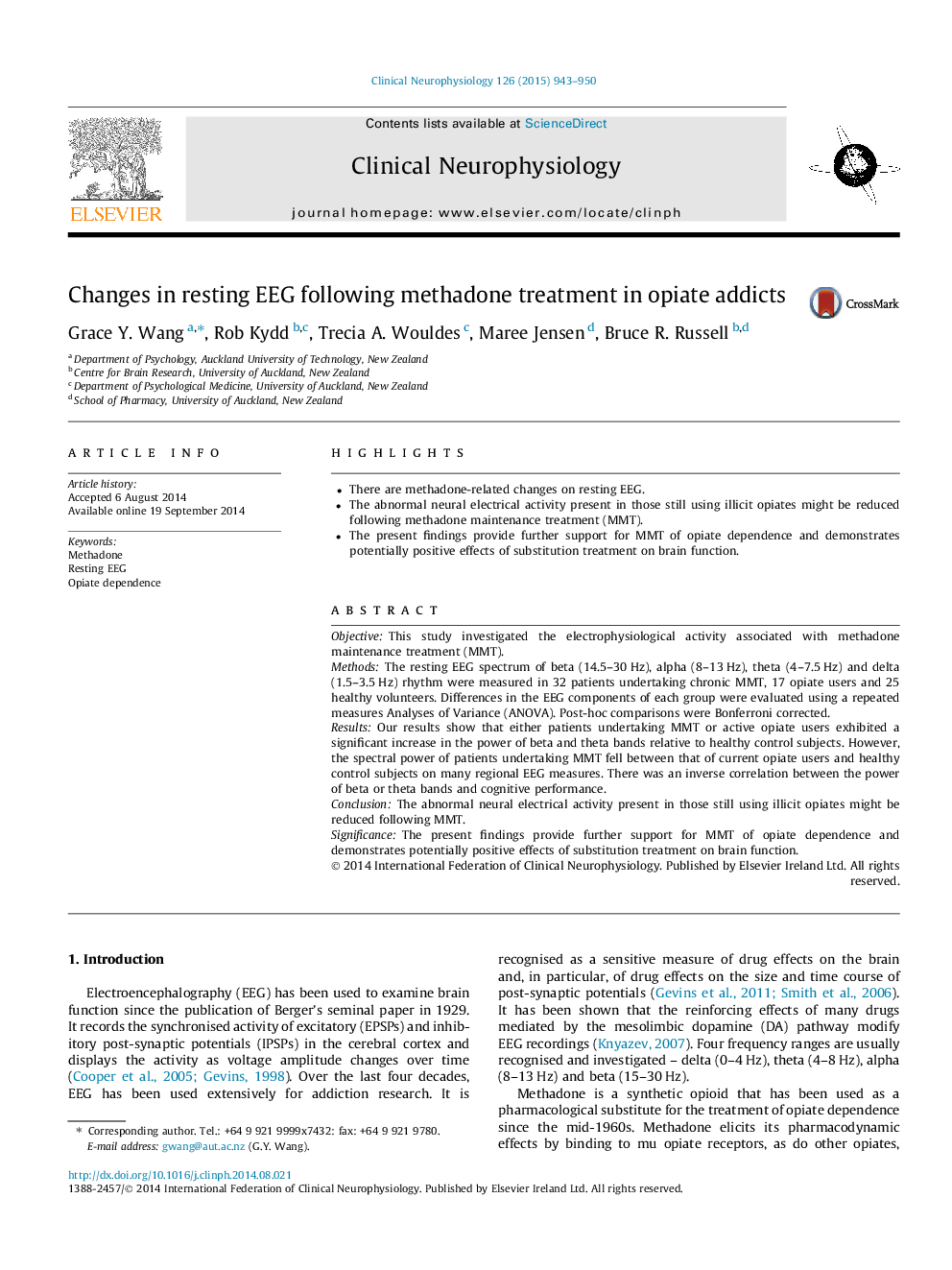| Article ID | Journal | Published Year | Pages | File Type |
|---|---|---|---|---|
| 3042787 | Clinical Neurophysiology | 2015 | 8 Pages |
•There are methadone-related changes on resting EEG.•The abnormal neural electrical activity present in those still using illicit opiates might be reduced following methadone maintenance treatment (MMT).•The present findings provide further support for MMT of opiate dependence and demonstrates potentially positive effects of substitution treatment on brain function.
ObjectiveThis study investigated the electrophysiological activity associated with methadone maintenance treatment (MMT).MethodsThe resting EEG spectrum of beta (14.5–30 Hz), alpha (8–13 Hz), theta (4–7.5 Hz) and delta (1.5–3.5 Hz) rhythm were measured in 32 patients undertaking chronic MMT, 17 opiate users and 25 healthy volunteers. Differences in the EEG components of each group were evaluated using a repeated measures Analyses of Variance (ANOVA). Post-hoc comparisons were Bonferroni corrected.ResultsOur results show that either patients undertaking MMT or active opiate users exhibited a significant increase in the power of beta and theta bands relative to healthy control subjects. However, the spectral power of patients undertaking MMT fell between that of current opiate users and healthy control subjects on many regional EEG measures. There was an inverse correlation between the power of beta or theta bands and cognitive performance.ConclusionThe abnormal neural electrical activity present in those still using illicit opiates might be reduced following MMT.SignificanceThe present findings provide further support for MMT of opiate dependence and demonstrates potentially positive effects of substitution treatment on brain function.
